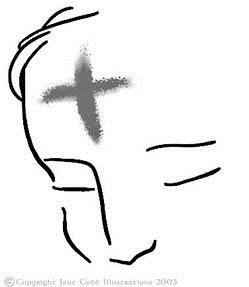 When in the calendar Ash Wednesday falls depends on the date of Easter and so as to allow for the forty days of Lent. Traditionally the ashes are made from palms left over from Palm Sunday the previous year. These are burnt and then reduced to a fine powder before being imposed on the heads of the people.
When in the calendar Ash Wednesday falls depends on the date of Easter and so as to allow for the forty days of Lent. Traditionally the ashes are made from palms left over from Palm Sunday the previous year. These are burnt and then reduced to a fine powder before being imposed on the heads of the people.
During the Mass the penitential rite is omitted. The imposition of the ashes takes place after the homily. The ashes are rich in meaning and this is reflected in the prayers that the priest uses. They remind us that before the greatness of God we are like dust. They remind us that one day all must die and that we are to think about the things of God during Lent. They call on us to repent from our sins and to change our lives to become more like Jesus Christ. But they also call on us to make preparations for the great feast of Easter when we shall eat the Last Supper with Jesus, walk the way of the cross, die on Calvary and then rise to new life on Easter Sunday.
The priest blesses the ashes with holy water then marks the forehead of each person with a cross drawn with the ash while saying: “Turn away from sin and be faithful to the gospel”, or, “Remember, man, you are dust and to dust you will return.” The readings Joel 2: 12-18 and 2 Corinthians 5: 20-6: 2 are strong calls to penance and reconciliation while the Gospel from Matthew (6: 1-6, 16-18) warns that our almsgiving, fasting and prayer should be for the greater glory of God and not to make us look holy in the eyes of other people.
The use of ashes sprinkled on your head as a sign of sorrow and repentance goes back to the times of the Old Testament and Jesus would have been familiar with the practice.They are traditionally made by burning the palms used at Palm Sunday the previous year.
Ash Wednesday is also one of the two days of fasting and abstinence that remains in the Church’s year – the other is Good Friday.